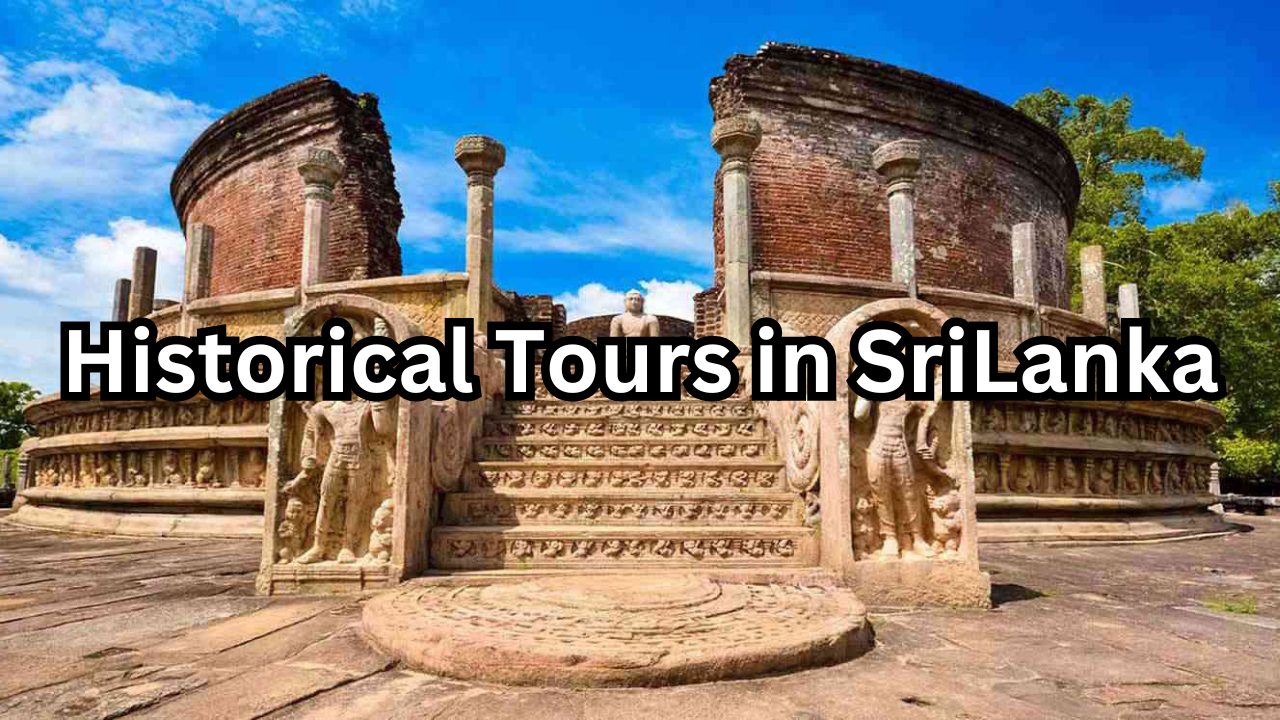Table of Contents
Introduction
Sri Lanka, an island nation nestled in the Indian Ocean, is a treasure trove of history and culture. Its rich heritage is a tapestry woven with ancient kingdoms, colonial influences, and vibrant traditions. Historical Tours in SriLanka offer a captivating journey through time, allowing visitors to delve deep into the island’s past and uncover its fascinating stories.
From majestic rock fortresses to ancient cities adorned with ruins, each historical site in Sri Lanka whispers tales of bygone eras and civilizations. These tours not only showcase the architectural marvels of the past but also provide insights into the religious, social, and cultural fabric that shaped the island’s identity.
In this guide, we will embark on a virtual exploration of ten historical Tours in SriLanka, each offering a unique perspective and a captivating glimpse into the country’s rich historical tapestry. Join us as we unravel the secrets of Sigiriya, wander through the ancient streets of Polonnaruwa, and immerse ourselves in the cultural splendor of Kandy and beyond. Get ready to travel through time and witness the timeless allure of Sri Lanka’s historical wonders.
Brief Overview of Historical Tours in SriLanka:
Sri Lanka’s historical heritage is as diverse as it is extensive, spanning thousands of years and encompassing a myriad of civilizations and influences. The island’s strategic location along ancient trade routes attracted merchants, adventurers, and settlers from various corners of the world, contributing to its multicultural and multi-ethnic tapestry.
- Ancient Kingdoms: Sri Lanka was home to several powerful ancient kingdoms, including Anuradhapura, Polonnaruwa, and Kandy. These kingdoms left behind impressive ruins, monasteries, and irrigation systems that showcase advanced engineering and architectural prowess.
- Colonial Era: The island experienced centuries of colonial rule by the Portuguese, Dutch, and British, each leaving their mark on the culture, language, and infrastructure of Sri Lanka. Fortifications, churches, and colonial-era buildings still stand as reminders of this period.
- Buddhist Heritage: Buddhism has been deeply ingrained in Sri Lankan culture for over two millennia. The country boasts ancient temples, sacred relics, and religious sites that attract pilgrims and scholars alike.
- Cultural Fusion: Sri Lanka’s historical heritage is a blend of indigenous traditions with influences from India, Southeast Asia, the Middle East, and Europe. This fusion is evident in art, music, dance, cuisine, and religious practices.
Importance of Historical Tours in Understanding Sri Lanka’s Culture and Past:
Historical tours play a vital role in unraveling the layers of Sri Lanka’s rich cultural heritage and deep-rooted history. They offer several key benefits:
- Educational Experience: Historical tours provide valuable insights into the evolution of Sri Lankan society, from ancient civilizations to modern times. Visitors gain a deeper understanding of the country’s historical milestones, cultural practices, and societal norms.
- Preservation of Heritage: By promoting historical tourism, Sri Lanka encourages the preservation and conservation of its archaeological sites, monuments, and artifacts. These efforts safeguard the country’s heritage for future generations.
- Cultural Exchange: Historical tours facilitate cultural exchange and dialogue between locals and tourists. Visitors have the opportunity to interact with communities, learn about local traditions, and appreciate the diversity of Sri Lanka’s cultural mosaic.
- Promotion of Tourism: Historical tourism contributes significantly to Sri Lanka’s tourism industry, generating revenue, creating employment opportunities, and supporting local businesses. It helps showcase the country’s unique appeal as a historical and cultural destination.
Overall, historical Tours in SriLanka not only offer a journey through time but also foster a deeper appreciation for the country’s rich historical heritage, cultural diversity, and enduring traditions. They are windows to the past that open doors to understanding and appreciation in the present.
Sigiriya Rock Fortress Tour
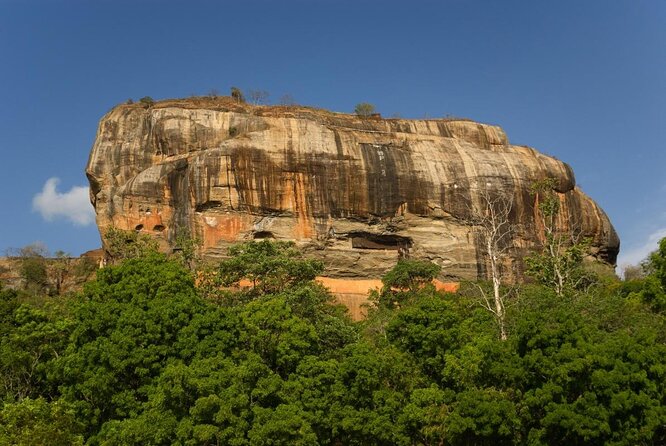
Embark on a mesmerizing journey back in time with a tour of the legendary Sigiriya Rock Fortress, an iconic UNESCO World Heritage site nestled amidst the lush landscapes of Sri Lanka. Rising dramatically from the surrounding plains, Sigiriya is steeped in history and mystery, offering visitors a glimpse into the ancient civilizations that once thrived here. The fortress dates back to the 5th century AD when it served as a royal palace and fortress for King Kasyapa. Its most striking feature is the colossal rock that dominates the skyline, adorned with intricate frescoes depicting celestial maidens and surrounded by landscaped gardens and water features.
As you ascend the rock, guided by experienced tour experts, you’ll unravel the engineering marvels and artistic treasures hidden within Sigiriya. The summit reveals not just panoramic vistas of the surrounding countryside but also the remnants of the king’s palace complex, including the famous Lion Gate and the Mirror Wall adorned with ancient graffiti. Each step of the Sigiriya Rock Fortress Tour is a step closer to understanding the grandeur, ingenuity, and historical significance of this awe-inspiring monument, making it a must-visit destination for history enthusiasts and curious travelers alike.
Description of Sigiriya and Its Historical Significance:
Sigiriya, also known as the Lion Rock, is an ancient rock fortress located in the central Matale District of Sri Lanka. Rising majestically to a height of over 600 feet, Sigiriya is a testament to ancient engineering and architectural prowess. Its historical significance dates back to the 5th century AD when King Kasyapa chose this site as the capital of his kingdom. The fortress served not only as a royal palace but also as a fortified citadel, surrounded by elaborate gardens, reservoirs, and defensive structures. Today, Sigiriya stands as one of Sri Lanka’s most iconic and visited attractions, drawing travelers from around the globe to marvel at its ancient splendor and learn about its intriguing history.
Tour Highlights, Including the Rock Fortress, Frescoes, and Gardens:
A tour of Sigiriya promises a wealth of captivating highlights that showcase its rich heritage and natural beauty. The journey begins with a climb up the ancient staircases carved into the rock, leading to the renowned Sigiriya Rock Fortress perched atop. At the summit, visitors are greeted by breathtaking panoramic views of the surrounding landscape, offering a glimpse into the strategic advantage this site provided in ancient times. Within the fortress, marvel at the remnants of the king’s palace complex, including the iconic Lion Gate entrance and the Mirror Wall adorned with ancient inscriptions.
One of the most mesmerizing aspects of Sigiriya is its ancient frescoes, located in a sheltered pocket of the rock face. These vivid paintings depict celestial maidens and are a testament to the artistic mastery of the era. Additionally, the carefully landscaped gardens surrounding Sigiriya, known as the Water Gardens, provide a serene retreat with fountains, pools, and terraces that add to the allure of this UNESCO World Heritage site.
Tips for Visitors and Recommended Tour Duration:
For visitors planning to explore Sigiriya, it’s advisable to wear comfortable clothing and sturdy footwear suitable for climbing. The ascent to the summit can take around 1-1.5 hours, depending on your pace and fitness level, so it’s recommended to start early in the day to avoid the midday heat. Guided tours are available and highly recommended as they provide insightful commentary on the history, architecture, and significance of Sigiriya.
A typical tour duration for Sigiriya, including the climb, exploration of the fortress and gardens, and time for photography and appreciation of the views, can range from 2 to 3 hours. However, visitors with a keen interest in history and archaeology may choose to spend more time immersing themselves in the details and stories of this ancient marvel.
Polonnaruwa Ancient City Tour
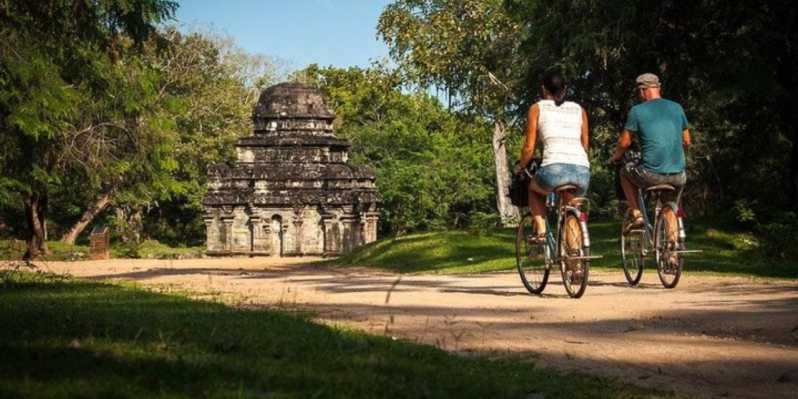
Embark on an enchanting journey through time with a tour of Polonnaruwa, an ancient city steeped in history and heritage. Located in Sri Lanka’s North Central Province, Polonnaruwa served as the island’s capital during the medieval period (11th to 13th centuries AD), showcasing the grandeur of the Sinhalese civilization at its peak. Today, this UNESCO World Heritage site presents a captivating array of archaeological treasures, including royal palaces, temples, stupas, and statues, providing visitors with a glimpse into a bygone era of prosperity and cultural richness.
The Polonnaruwa Ancient City Tour invites you to explore the majestic ruins that dot this ancient landscape. Highlights of the tour include the imposing Royal Palace complex, the iconic Quadrangle with its intricately carved stone structures such as the Vatadage and the Gal Vihara with its colossal Buddha statues carved into the granite rock. As you wander through the meticulously preserved remnants of Polonnaruwa’s past, guided by knowledgeable experts, you’ll unravel the stories of kings, artisans, and religious devotees who once thrived in this historical hub. With its blend of architectural splendor, religious significance, and historical intrigue, a visit to Polonnaruwa promises an enriching experience for history enthusiasts and curious travelers alike.
Overview of Polonnaruwa as an Ancient Capital:
Polonnaruwa stands as a testament to Sri Lanka’s glorious past, having served as the island’s capital during the medieval period from the 11th to the 13th century AD. This ancient city, located in the North Central Province, flourished under the reign of several Sinhalese kings, leaving behind a rich legacy of art, architecture, and cultural heritage. Polonnaruwa’s strategic location near the Mahaweli River facilitated trade and agriculture, contributing to its prosperity and status as a center of political and religious power in ancient Sri Lanka.
Key Attractions such as Royal Palaces, Temples, and Statues:
The Polonnaruwa Ancient City Tour unveils a treasure trove of historical wonders, with key attractions that showcase the city’s grandeur and sophistication. The Royal Palace complex, with its audience halls, chambers, and gardens, provides insights into the administrative and royal life of the era. The Quadrangle, a sacred precinct, features architectural marvels like the Vatadage, an ancient relic shrine, and the Gal Potha (Stone Book) with its inscriptions detailing the conquests of King Nissanka Malla.
Temples such as the Lankathilaka and Tivanka Image House showcase exquisite craftsmanship and religious devotion, with intricately carved statues and murals depicting Buddhist themes. However, the crowning glory of Polonnaruwa is undoubtedly the Gal Vihara, a rock temple housing four colossal Buddha statues carved into the granite cliff, including the iconic standing Buddha and the reclining Buddha.
Ideal Itinerary for Exploring Polonnaruwa’s Historical Sites:
For an immersive experience in Polonnaruwa, a recommended itinerary includes starting at the Archaeological Museum to gain an overview of the city’s history and artifacts. Begin your tour at the Royal Palace complex, followed by a visit to the Quadrangle to admire the Vatadage, Gal Potha, and other structures. Continue to the Gal Vihara to marvel at the majestic Buddha statues before exploring the intricacies of the Lankathilaka and Tivanka Image House.
Afterwards, take time to visit lesser-known but equally fascinating sites like the Lotus Pond, Thuparama Image House, and the remains of ancient irrigation systems such as the Parakrama Samudra. End your day with a leisurely stroll along the picturesque shores of the Parakrama Samudra reservoir, reflecting on the grandeur and legacy of Polonnaruwa’s ancient capital.
Anuradhapura Exploration
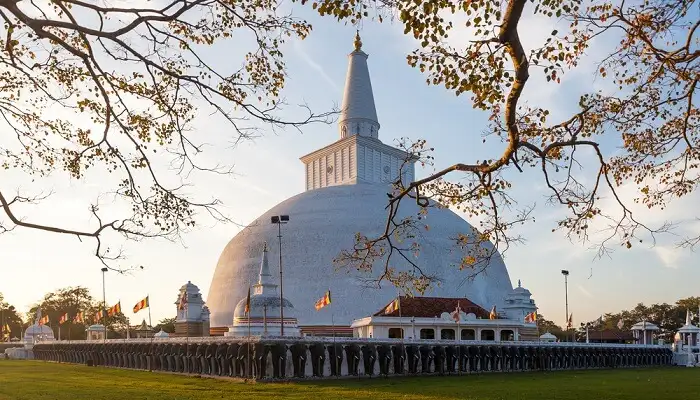
Embark on a captivating journey into the heart of Sri Lanka’s ancient past with an exploration of Anuradhapura, a city steeped in history, spirituality, and architectural marvels. As one of the oldest continuously inhabited cities in the world, Anuradhapura served as the capital of numerous Sinhalese kingdoms for over a millennium, leaving behind a legacy of grand monuments, sacred sites, and hydraulic engineering feats that reflect the ingenuity and cultural richness of its inhabitants.
The Anuradhapura Exploration tour invites travelers to delve into the city’s historical tapestry, starting with the sacred precincts that are central to Sri Lanka’s Buddhist heritage. Visit the Sri Maha Bodhi, a sacred fig tree believed to be a descendant of the original Bodhi tree under which Lord Buddha attained enlightenment. Explore the Ruwanwelisaya, an awe-inspiring stupa that stands as a testament to ancient craftsmanship and religious devotion. Wander through the ancient monastic complexes of Abhayagiriya and Jetavanaramaya, where towering stupas and ruins whisper tales of ancient monks and scholars.
Aside from its religious significance, Anuradhapura boasts impressive hydraulic engineering feats such as the Tissa Wewa reservoir and the intricately designed irrigation network of canals and tanks. These engineering marvels sustained the city’s agricultural prosperity and are a testament to the advanced knowledge and skills of ancient Sri Lankans.
The Anuradhapura Exploration tour offers a glimpse into the grandeur, spirituality, and cultural heritage of this ancient capital, making it a must-visit destination for history enthusiasts, spiritual seekers, and curious travelers eager to uncover the mysteries of Sri Lanka’s past.
Introduction to Anuradhapura and Its Role as the First Ancient Kingdom:
Anuradhapura, situated in the North Central Province of Sri Lanka, holds a prominent place in the island’s history as the first ancient kingdom and capital. It served as the political, economic, and cultural center of Sri Lanka for many centuries, beginning around the 4th century BC. The city flourished under the rule of successive Sinhalese kings, who left behind a legacy of monumental architecture, religious institutions, and hydraulic engineering marvels.
Touring Options, Including Stupas, Monasteries, and Archaeological Sites:
Anuradhapura offers a plethora of touring options that showcase its historical and cultural heritage. Stupas, or dagobas, are prominent features of the city, with the Ruwanwelisaya, Jetavanaramaya, and Abhayagiriya stupas standing as majestic testaments to ancient craftsmanship and religious devotion. These monumental structures, often surrounded by intricate carvings and serene surroundings, provide insights into ancient Buddhist practices and beliefs.
Monasteries such as the Mahavihara complex, home to the oldest tree-recorded human-planted tree in the world, the Sri Maha Bodhi, offer glimpses into the spiritual and intellectual pursuits of ancient monks. The Isurumuniya Rock Temple, with its ancient rock carvings and tranquil setting, provides a serene retreat for contemplation and appreciation of ancient artistry.
Additionally, Anuradhapura’s archaeological sites, including the ancient city walls, royal palaces, and bathing tanks such as the Kuttam Pokuna, offer a glimpse into the city’s urban planning, societal structure, and advanced engineering feats.
Insights into Anuradhapura’s Cultural and Religious Significance:
Anuradhapura holds immense cultural and religious significance as a center of Buddhist worship and scholarship. The Sri Maha Bodhi, believed to have been grown from a cutting of the original Bodhi tree under which Lord Buddha attained enlightenment, is revered by Buddhists worldwide and stands as a symbol of spiritual continuity and devotion.
The city’s monastic complexes, stupas, and religious edifices not only showcase the architectural prowess of ancient Sri Lankans but also highlight the deep-rooted spiritual practices and beliefs that shaped the island’s cultural identity. Anuradhapura’s cultural and religious heritage continues to inspire pilgrims, scholars, and travelers, offering a profound connection to Sri Lanka’s ancient past and spiritual legacy.
Dambulla Cave Temple Visit
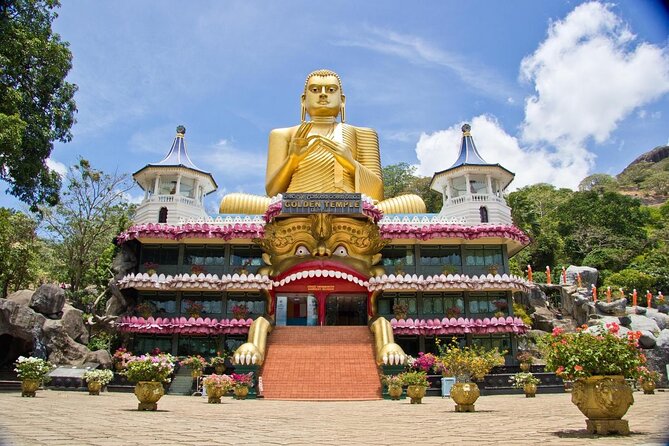
Embark on a mesmerizing journey into the heart of Sri Lanka’s spiritual and artistic heritage with a visit to the Dambulla Cave Temple, also known as the Golden Temple of Dambulla. Nestled atop a massive rock outcrop in the central Matale District, this UNESCO World Heritage site is renowned for its ancient cave complex adorned with intricate Buddhist murals and statues dating back to the 1st century BC. As you ascend the stone steps leading to the caves, you’ll be greeted by a breathtaking panorama of the surrounding countryside, setting the stage for an unforgettable cultural immersion.
The Dambulla Cave Temple houses five caves, each with its own unique treasures and artistic marvels. From the colossal reclining Buddha statue in Cave 1 to the vibrant frescoes depicting scenes from Buddha’s life in Cave 2, every corner of this sacred site is a testament to the rich artistic heritage and religious devotion of ancient Sri Lankans. As you explore the caves, guided by knowledgeable experts, you’ll unravel the stories, symbolism, and spiritual significance embedded in the intricate paintings, statues, and architecture, making your Dambulla Cave Temple visit a profound and enlightening experience.
Description of Dambulla Cave Temple and Its Historical Context:
The Dambulla Cave Temple, nestled amidst the scenic landscapes of Sri Lanka’s central Matale District, stands as a testament to the island’s rich cultural and religious heritage. Carved into a massive rock outcrop, this ancient temple complex comprises five caves adorned with intricate paintings, statues, and religious artifacts. Its historical roots trace back to over two millennia ago, with the caves initially serving as a refuge for King Valagamba during an invasion. Later, these caves were transformed into a center of Buddhist worship and artistic expression, showcasing the evolution of Sri Lankan art and architecture over the centuries.
Exploration of Cave Paintings, Buddha Statues, and Religious Significance:
A visit to the Dambulla Cave Temple offers a fascinating exploration of ancient Buddhist art, symbolism, and religious devotion. The caves are adorned with vibrant frescoes depicting scenes from Buddha’s life, celestial beings, and mythical creatures, providing insights into the artistic techniques and spiritual narratives of the era. The cave paintings not only showcase the mastery of ancient Sri Lankan artists but also serve as visual narratives of Buddhist teachings and values.
Within the caves, visitors will encounter a mesmerizing array of Buddha statues in various poses, including the colossal reclining Buddha statue in Cave 1, which spans an impressive 14 meters in length. Each statue is imbued with symbolic gestures and expressions, reflecting the diverse aspects of Buddha’s teachings and enlightenment. The religious significance of the Dambulla Cave Temple lies in its role as a sacred pilgrimage site and a place of meditation, where devotees and visitors alike can immerse themselves in the tranquility and spiritual ambiance of the caves.
Practical Information for Tourists Visiting Dambulla:
For tourists planning a visit to the Dambulla Cave Temple, it’s advisable to wear modest clothing suitable for a religious site, as well as comfortable footwear for walking and climbing stairs. The temple complex is open to visitors during daytime hours, with guided tours available to provide insights into the history, art, and significance of the caves.
It’s recommended to allocate at least 1-2 hours for exploring the entire temple complex, including all five caves and the surrounding grounds. Photography is allowed in most areas but may be restricted in certain sections for cultural or religious reasons, so it’s important to respect the guidelines and instructions provided by temple staff. Additionally, visitors should be mindful of their behavior and refrain from loud noises or disruptive behavior out of respect for the sacredness of the site and fellow visitors.
Galle Fort and City Walk
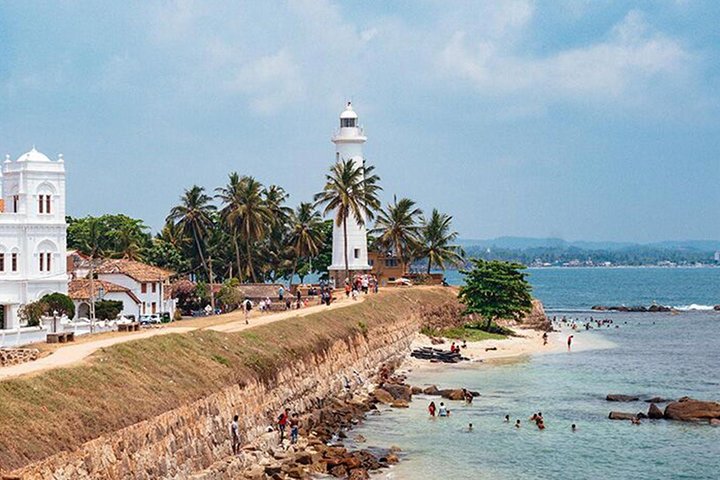
Embark on a captivating journey through history and culture with a visit to Galle Fort, a UNESCO World Heritage site located along Sri Lanka’s southwestern coast. This historic fortification, built by the Portuguese in the 16th century and later fortified by the Dutch, offers a fascinating blend of colonial architecture, charming streets, and cultural landmarks. As you step through the iconic ramparts of Galle Fort, you’ll be transported back in time, wandering through cobblestone streets lined with colonial-era buildings, vibrant boutiques, art galleries, and cozy cafes.
A city walk through Galle Fort allows visitors to immerse themselves in the rich tapestry of the past and present. Explore notable attractions such as the Galle Lighthouse, a beacon of maritime history, and the Dutch Reformed Church with its distinctive colonial architecture and tranquil atmosphere. Stroll along the ramparts for panoramic views of the Indian Ocean, or delve into the Maritime Archaeology Museum to uncover artifacts and stories of the region’s seafaring legacy. With its unique blend of history, culture, and scenic beauty, a Galle Fort and City Walk promises an enchanting experience for history enthusiasts, art lovers, and curious travelers alike.
Overview of Galle Fort’s Colonial History and Architecture:
Galle Fort stands as a testament to Sri Lanka’s colonial past, with a history dating back to the 16th century when it was initially constructed by the Portuguese. Subsequently fortified by the Dutch in the 17th century, Galle Fort boasts a unique blend of European architectural styles, including Dutch colonial buildings, Portuguese ramparts, and British influences from the 19th century. This UNESCO World Heritage site served as a strategic hub for maritime trade, attracting merchants, explorers, and settlers from around the world. Today, visitors can admire the well-preserved colonial architecture within the fort, characterized by narrow streets, sturdy ramparts, historic buildings, and iconic landmarks that narrate tales of conquest, commerce, and cultural exchange.
Walking Tour Highlights, Including Historic Buildings, Museums, and Views:
A walking tour of Galle Fort offers a delightful immersion into its rich history, cultural heritage, and scenic beauty. Begin your exploration at the iconic Galle Clock Tower, a symbol of British colonial influence, before wandering along the ramparts for panoramic views of the ocean and surrounding landscapes. Visit historic buildings such as the Dutch Reformed Church, with its striking architecture and serene ambiance, and the Old Dutch Hospital, now transformed into a vibrant shopping and dining precinct.
Don’t miss the Galle Fort Museum, housed within a Dutch colonial building, showcasing artifacts, maps, and exhibits that unravel the fort’s maritime history and multicultural heritage. For nature enthusiasts, a visit to the National Maritime Museum provides insights into Sri Lanka’s maritime traditions and biodiversity. End your tour with a leisurely stroll through quaint streets adorned with art galleries, boutique shops, and charming cafes, soaking in the relaxed atmosphere and architectural splendor of Galle Fort.
Recommendations for Experiencing Galle’s Cultural and Culinary Scene:
To experience Galle’s cultural richness and culinary delights, venture beyond the fort’s walls to explore the vibrant city. Discover local artistry at the Historical Mansion Museum and the Martin Wickramasinghe Folk Museum, showcasing traditional crafts, folklore, and literary heritage. Indulge in Galle’s culinary scene by sampling authentic Sri Lankan cuisine at traditional eateries like the Fortaleza Restaurant or enjoying fusion dishes at contemporary cafes and restaurants scattered throughout the city.
For a deeper cultural immersion, attend cultural performances or workshops showcasing traditional music, dance, and crafts. Galle’s bustling markets, such as the Galle Fort Market and the Fish Market, offer opportunities to engage with locals, purchase souvenirs, and savor fresh seafood delicacies. Immerse yourself in Galle’s cultural tapestry by participating in community events, art exhibitions, or heritage walks that celebrate the city’s diverse heritage and creative spirit.
Kandy Cultural Tour
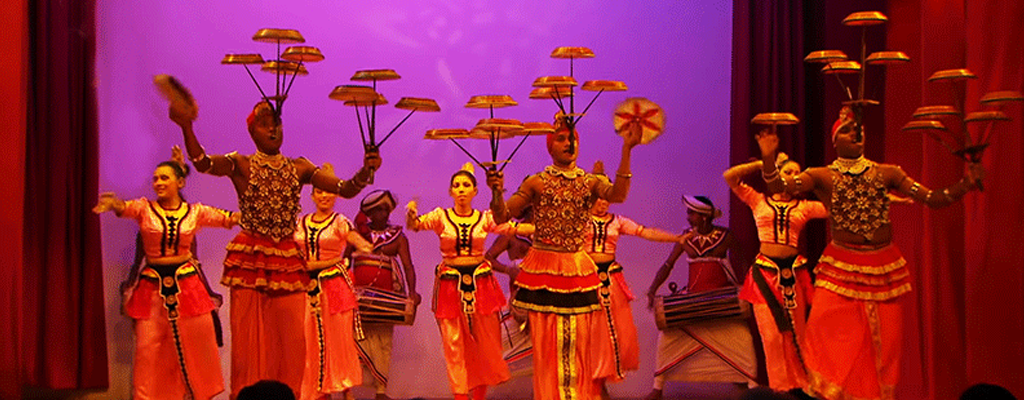
Embark on a captivating journey into the heart of Sri Lanka’s cultural heritage with a Kandy Cultural Tour, exploring the vibrant city of Kandy nestled amidst lush hills and picturesque landscapes. As a UNESCO World Heritage site and a cultural capital of the island, Kandy is steeped in history, tradition, and spirituality. The tour begins with a visit to the iconic Temple of the Tooth Relic (Sri Dalada Maligawa), a sacred Buddhist temple that houses the relic of the tooth of Lord Buddha. This revered shrine attracts pilgrims and visitors alike, offering insights into Sri Lanka’s deep-rooted Buddhist heritage and architectural splendor.
Beyond the temple, the Kandy Cultural Tour invites travelers to discover the city’s rich cultural tapestry through immersive experiences. Explore the Kandy Lake, a tranquil oasis in the heart of the city, surrounded by lush gardens and scenic vistas. Witness a traditional Kandyan dance performance, showcasing dynamic movements, colorful costumes, and rhythmic drumming that celebrate the island’s cultural diversity. Delve into the history and artistry of Kandy at the National Museum or wander through bustling markets and artisan workshops to admire local crafts, spices, and culinary delights. With its blend of spirituality, art, and heritage, a Kandy Cultural Tour promises an enriching and unforgettable exploration of Sri Lanka’s cultural capital.
Introduction to Kandy as a Cultural Capital and UNESCO Site:
Kandy, nestled amidst the scenic hills of central Sri Lanka, holds the esteemed title of being the island’s cultural capital and a UNESCO World Heritage site. This vibrant city is steeped in rich traditions, spiritual significance, and artistic heritage, making it a captivating destination for cultural enthusiasts and travelers seeking a glimpse into Sri Lanka’s cultural tapestry. Kandy’s historical importance is underscored by the Temple of the Tooth Relic (Sri Dalada Maligawa), which houses the sacred tooth relic of Lord Buddha, making it one of the most revered Buddhist sites in the world. The city’s picturesque setting, cultural events, and vibrant markets further enhance its allure as a cultural hub that celebrates the island’s diverse heritage.
Tour of Temple of the Tooth Relic, Kandyan Dance Performances, and Museums:
A tour of Kandy’s cultural attractions promises an immersive experience into the city’s rich heritage and artistic traditions. Begin your exploration at the Temple of the Tooth Relic, where the revered relic is enshrined within a magnificent temple complex. Witness daily rituals, offerings, and ceremonies that highlight the spiritual significance of this sacred site, surrounded by intricate architecture and serene surroundings.
No visit to Kandy is complete without experiencing a traditional Kandyan dance performance, showcasing dynamic movements, elaborate costumes, and rhythmic drumming that captivate audiences and celebrate the island’s cultural heritage. These performances often include fire dances, acrobatics, and cultural storytelling, providing a colorful and engaging glimpse into Sri Lanka’s vibrant arts scene.
Additionally, Kandy boasts several museums that offer insights into the city’s history, art, and culture. The National Museum of Kandy showcases artifacts, paintings, and exhibits related to Sri Lanka’s royal past and cultural evolution, while the Folk Museum provides a glimpse into traditional crafts, folklore, and rural life. Explore these museums to deepen your understanding of Kandy’s cultural significance and artistic legacy.
Practical Tips for Travelers Exploring Kandy’s Cultural Attractions:
For travelers planning to explore Kandy’s cultural attractions, it’s advisable to dress modestly and respectfully when visiting religious sites such as the Temple of the Tooth Relic. Comfortable footwear is recommended as you may be walking or standing for extended periods during cultural performances or museum visits. It’s also beneficial to check the timings and schedules of cultural events, temple rituals, and museum opening hours in advance to plan your itinerary accordingly.
When attending Kandyan dance performances or cultural events, arrive early to secure a good view and immerse yourself in the vibrant ambiance. Respect local customs and traditions, such as removing footwear before entering temples or observing silence and reverence during religious ceremonies. Lastly, engage with local guides, artisans, and cultural experts to gain deeper insights into Kandy’s cultural heritage and make the most of your cultural exploration in this enchanting city.
Yapahuwa Citadel Excursion
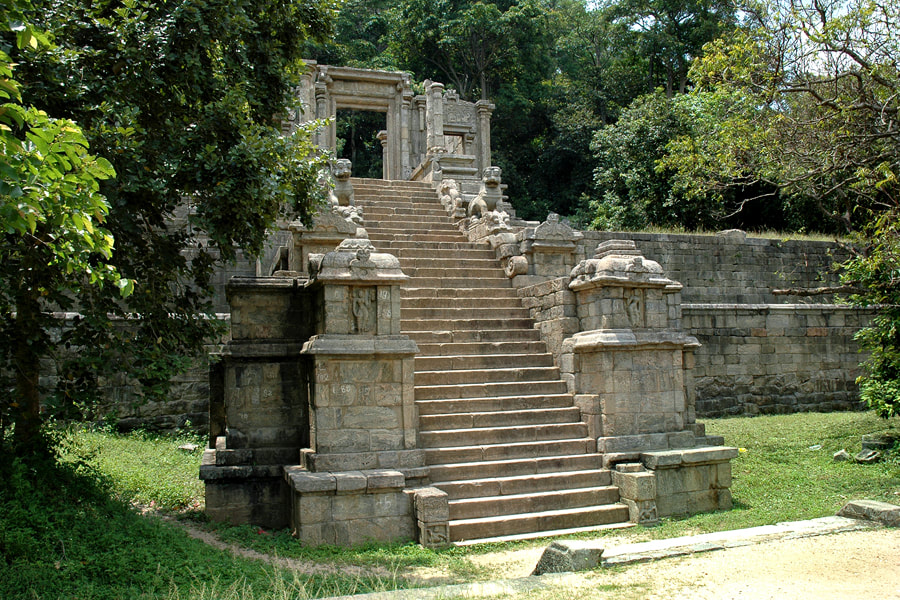
Embark on an enriching journey into Sri Lanka’s medieval history with a Yapahuwa Citadel Excursion, exploring the ancient citadel of Yapahuwa nestled amidst verdant landscapes. Located in the North Western Province, Yapahuwa served as a royal capital and stronghold during the 13th century, showcasing a unique blend of architectural marvels, religious significance, and strategic fortifications. The citadel, perched atop a massive rock outcrop, offers panoramic views of the surrounding countryside, making it a captivating destination for history enthusiasts and travelers seeking to unravel the island’s storied past.
During the Yapahuwa Citadel Excursion, visitors can marvel at the remnants of the ancient palace complex, including the imposing stone staircase adorned with intricate carvings, the ruins of the royal residence, and the iconic lion statue that once guarded the entrance. Explore the citadel’s religious sites, such as the rock-cut caves housing Buddha statues and the ancient stupa, which reflect the spiritual and cultural heritage of medieval Sri Lanka. The Yapahuwa Citadel Excursion promises an immersive experience into a bygone era of kings, warriors, and architectural splendor, offering insights into the island’s medieval legacy and strategic importance.
Historical Background of Yapahuwa as a Medieval Citadel:
Yapahuwa, situated in Sri Lanka’s North Western Province, holds a significant place in the island’s medieval history as a formidable citadel and royal capital. It rose to prominence during the 13th century when King Buwanekabahu I established it as a center of power and governance. The citadel served as a strategic fortress, providing protection to the kingdom and serving as a residence for royalty. Its location atop a massive rock outcrop offered natural defenses, while its architectural features showcased the artistic and engineering prowess of the era. Yapahuwa flourished briefly as a thriving capital before being abandoned, leaving behind ruins that narrate tales of medieval glory, cultural fusion, and strategic significance.
Touring Yapahuwa’s Palace Ruins, Stone Staircase, and Surrounding Area:
A tour of Yapahuwa immerses visitors in the remnants of its majestic past, starting with the palace ruins that offer insights into the royal life and architectural grandeur of the era. The citadel’s most iconic feature is the monumental stone staircase, adorned with intricate carvings depicting mythical creatures, warriors, and religious motifs. Ascending this staircase leads to the upper terrace, where the ruins of the royal residence and audience hall can be explored, providing panoramic views of the surrounding landscapes.
The surrounding area of Yapahuwa is dotted with archaeological remnants, including rock-cut caves housing Buddha statues and ancient inscriptions. The ancient stupa and surrounding religious structures reflect the spiritual and cultural significance of Yapahuwa as a center of Buddhist worship and artistic expression. The natural beauty of the area, with its lush greenery and serene ambiance, adds to the allure of touring Yapahuwa and connecting with Sri Lanka’s medieval heritage.
Visitor Information and Suggested Activities at Yapahuwa:
For visitors planning to explore Yapahuwa, it’s advisable to wear comfortable clothing and sturdy footwear suitable for walking on uneven terrain and climbing stairs. The site is open for visits during daytime hours, and guided tours are available to provide insights into the historical, architectural, and cultural aspects of Yapahuwa.
Suggested activities at Yapahuwa include:
- Exploring the palace ruins, stone staircase, and upper terrace for panoramic views.
- Visiting the rock-cut caves with Buddha statues and ancient inscriptions.
- Learning about the citadel’s history and significance through guided tours or informational displays.
- Picnicking or enjoying a leisurely stroll amidst the natural beauty of the surrounding area.
- Engaging with local guides or historians to gain deeper insights into Yapahuwa’s medieval heritage and cultural legacy.
Overall, a visit to Yapahuwa offers a fascinating journey into Sri Lanka’s medieval past, showcasing the fusion of art, architecture, and strategic planning that defined this historic citadel.
Jaffna Fort and Heritage Sites
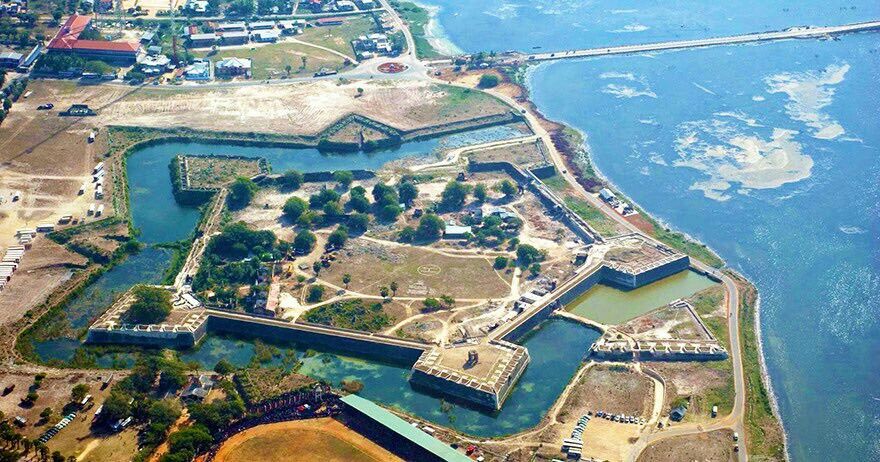
Explore the captivating heritage of Jaffna, a city steeped in history and cultural richness, with a visit to the iconic Jaffna Fort and surrounding heritage sites. Located in the northernmost tip of Sri Lanka, Jaffna boasts a unique blend of Tamil culture, colonial influences, and ancient traditions. The Jaffna Fort, originally built by the Portuguese in the 17th century and later expanded by the Dutch and British, stands as a symbol of the region’s strategic importance and architectural heritage. Its sturdy ramparts, bastions, and moat offer a glimpse into the fort’s military history and strategic significance during colonial times.
Adjacent to the Jaffna Fort, visitors can explore a treasure trove of heritage sites that showcase the city’s cultural and religious diversity. The Jaffna Library, a symbol of Tamil heritage and intellectual pursuit, houses a vast collection of ancient manuscripts, books, and archival materials, providing insights into the region’s literary and scholarly traditions. Nearby, the Nallur Kandaswamy Temple, dedicated to Lord Murugan, is a vibrant hub of Hindu worship and cultural festivities, with its intricate architecture, colorful sculptures, and elaborate rituals attracting devotees and tourists alike. A visit to Jaffna Fort and its surrounding heritage sites promises an enriching journey through time, unraveling the layers of Jaffna’s history, culture, and spiritual legacy.
Overview of Jaffna Fort’s Colonial History and Strategic Importance:
Jaffna Fort stands as a testament to Sri Lanka’s colonial past and strategic significance, particularly during the era of European colonial powers. Initially built by the Portuguese in the 17th century, the fort underwent expansions and modifications under Dutch and British rule, reflecting the shifting colonial powers in the region. Its strategic location along the Jaffna Peninsula’s northern coast made it a crucial stronghold for controlling maritime trade routes and protecting territories. The fort’s sturdy ramparts, bastions, and moat served as formidable defenses, withstanding sieges and battles that shaped the region’s history. Today, Jaffna Fort stands as a historic landmark, offering insights into the island’s colonial heritage and military architecture.
Tour of Fortifications, Churches, and Museums Within Jaffna Fort:
A tour of Jaffna Fort invites visitors to delve into its architectural splendor, historical narratives, and cultural significance. Explore the fortifications, including the impressive ramparts, bastions, and gateways that showcase the fort’s defensive prowess and strategic layout. The interior of the fort houses several colonial-era buildings, including the Governor’s Residence, the Queen’s House, and the Dutch Reformed Church, each offering glimpses into the colonial lifestyle, governance, and religious practices of the time.
Within Jaffna Fort, museums such as the Jaffna Archaeological Museum and the Maritime Museum provide insights into the region’s archaeology, heritage, and maritime history. Discover ancient artifacts, pottery, sculptures, and exhibits that narrate the cultural evolution and influences that have shaped Jaffna’s identity over centuries. The churches within the fort, such as St. James’ Church and St. Mary’s Cathedral, highlight the religious diversity and architectural heritage of Jaffna, reflecting the influences of Catholicism and Protestantism during colonial rule.
Exploring Jaffna’s Cultural Heritage Beyond the Fort Area:
Beyond the confines of Jaffna Fort, the city’s cultural heritage unfolds in a tapestry of traditions, festivals, and landmarks that showcase its unique identity. Visit the iconic Nallur Kandaswamy Temple, a vibrant Hindu shrine known for its elaborate rituals, festivals, and architectural grandeur, offering a glimpse into Jaffna’s spiritual and cultural practices. Explore the Jaffna Public Library, a symbol of Tamil intellectual heritage and literary revival, housing a vast collection of manuscripts, books, and historical documents.
Engage with local communities, artisans, and cultural centers to experience Jaffna’s traditional arts, crafts, and culinary delights. Attend cultural performances, music concerts, or religious ceremonies to immerse yourself in the city’s vibrant cultural scene and connect with its people. Explore nearby heritage sites such as the Point Pedro Lighthouse, Casuarina Beach, and Keerimalai Hot Springs, which offer natural beauty and historical significance, adding depth to your exploration of Jaffna’s cultural heritage beyond the fort area.
Mihintale Pilgrimage and Exploration
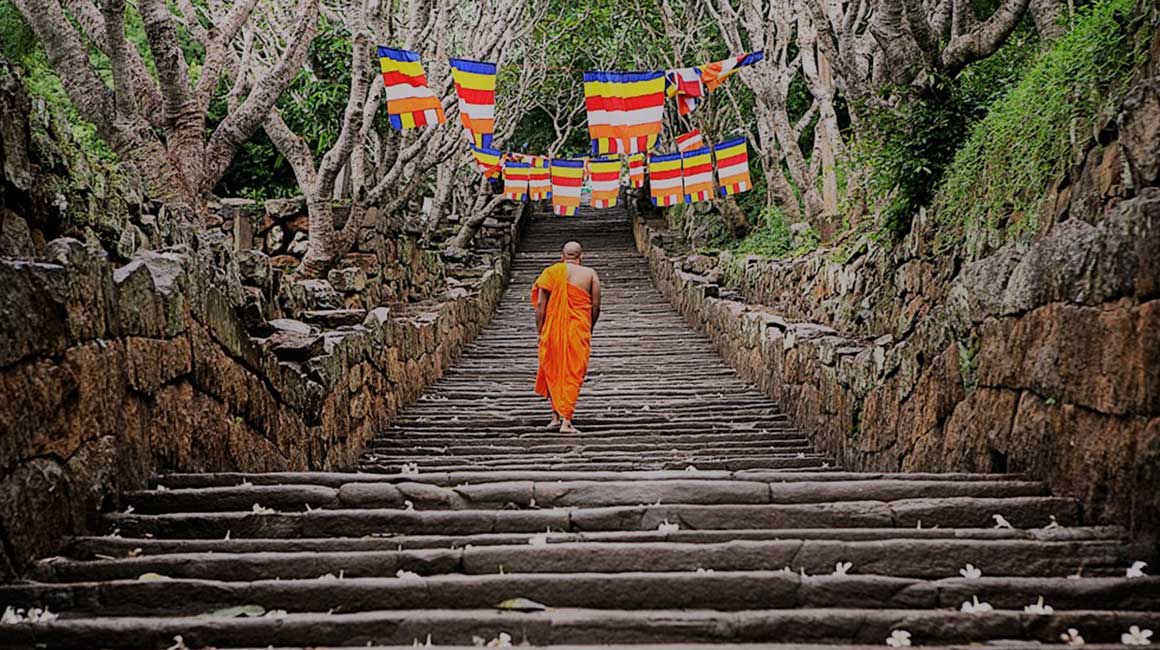
Embark on a spiritual and enlightening journey with a pilgrimage and exploration of Mihintale, a revered site in Sri Lanka’s cultural and religious landscape. Located near Anuradhapura, Mihintale holds immense significance as the birthplace of Buddhism in Sri Lanka, marking the spot where Mahinda Thero, an emissary of Emperor Ashoka, introduced the teachings of Buddha to the island over two millennia ago. As you ascend the sacred hill of Mihintale, you’ll encounter ancient stupas, monastic ruins, and tranquil meditation spots nestled amidst lush greenery, creating a serene and spiritually charged atmosphere.
The Mihintale Pilgrimage and Exploration offer opportunities for introspection, meditation, and connecting with the profound teachings of Buddhism. Visit the Mahinda Cave, where Mahinda Thero resided and preached, and pay homage at the Ambasthala Dagaba, a stupa marking the spot where Mahinda Thero first met King Devanampiya Tissa. The Aradhana Gala, or Meditation Rock, provides panoramic views of the surrounding landscape, inviting pilgrims and visitors to reflect and find inner peace. The journey through Mihintale is not just a physical exploration but a spiritual odyssey that resonates with the essence of Buddhism and its timeless teachings of compassion, mindfulness, and enlightenment.
Significance of Mihintale as a Buddhist Pilgrimage Site:
Mihintale holds profound significance as a revered Buddhist pilgrimage site in Sri Lanka, marking the historic moment when Buddhism was introduced to the island. It is believed to be the place where Mahinda Thero, the son of Emperor Ashoka of India, met King Devanampiya Tissa of Sri Lanka in the 3rd century BCE. This encounter led to the conversion of the king and his people to Buddhism, shaping the spiritual and cultural fabric of the nation. As such, Mihintale is often referred to as the “Cradle of Buddhism in Sri Lanka” and remains a sacred place of worship and reflection for Buddhists around the world.
Tour Highlights, Including Ancient Monasteries, Stupas, and Viewpoints:
A tour of Mihintale offers a captivating journey through ancient history, spirituality, and natural beauty. Begin your exploration at the Mahinda Cave, where Mahinda Thero is said to have resided and preached the teachings of Buddha. Nearby, the Ambasthala Dagaba marks the spot of Mahinda Thero’s first encounter with King Devanampiya Tissa, symbolizing the beginning of Buddhism’s influence in Sri Lanka. As you ascend the sacred hill, you’ll encounter ancient monastic ruins, meditation chambers, and inscriptions that offer insights into the early days of Buddhism on the island.
The tour also includes visits to impressive stupas such as the Maha Seya and Aradhana Gala, a meditation rock offering panoramic views of the surrounding countryside. The Kaludiya Pokuna, or Black Water Pond, is a serene oasis amidst the greenery, known for its tranquil ambiance and historical significance as a bathing place for monks. The tour culminates at the summit of Mihintale, where the Kantaka Chetiya stupa stands as a testament to the enduring legacy of Buddhism in Sri Lanka.
Planning a Mihintale Visit and Experiencing Its Spiritual Ambiance:
When planning a visit to Mihintale, it’s recommended to wear modest clothing out of respect for the sacredness of the site. Comfortable footwear is essential as the ascent to the summit involves climbing stairs and walking on uneven terrain. The best time to visit is during the early morning or late afternoon to avoid the heat and crowds, allowing for a more peaceful and contemplative experience.
To fully immerse yourself in Mihintale’s spiritual ambiance, take time to meditate or reflect at the various meditation spots and viewpoints along the journey. Engage with local monks or guides to gain insights into the history, significance, and practices of Buddhism at Mihintale. Participate in rituals such as offering flowers or lighting oil lamps at shrines to connect with the spiritual energy of the place. Whether you’re a devout Buddhist or a curious traveler seeking spiritual enrichment, a visit to Mihintale promises a profound and transformative experience amidst the serene beauty of nature and ancient heritage.
Trincomalee Historical Sites Tour
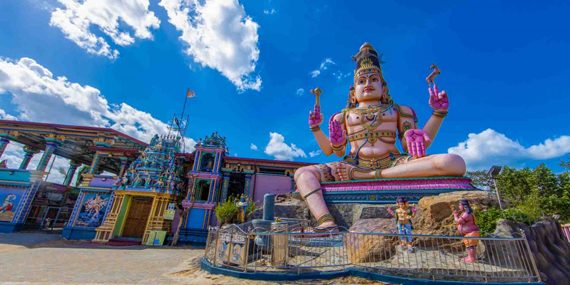
Embark on a fascinating journey through history with a Trincomalee Historical Sites Tour, exploring the rich cultural and maritime heritage of this coastal city in Sri Lanka. Trincomalee, known for its strategic importance and natural harbor, has been a crossroads of civilizations for centuries, attracting traders, sailors, and settlers from diverse cultures. The tour begins with a visit to the iconic Koneswaram Temple, a Hindu shrine perched atop Swami Rock overlooking the azure waters of the Indian Ocean. This ancient temple, dedicated to Lord Shiva, is steeped in mythology, legends, and architectural splendor, offering panoramic views and a sense of spiritual serenity.
The Trincomalee Historical Sites Tour continues with a journey through the colonial era at Fort Frederick, a 17th-century fortress built by the Portuguese and later expanded by the Dutch and British. Explore the fortifications, bastions, and archaeological remnants within Fort Frederick, gaining insights into the region’s colonial history, military strategies, and cultural exchange. Nearby, the Hoods Tower Museum showcases maritime artifacts, naval history, and exhibits related to Trincomalee’s naval heritage. The tour also includes visits to other historical sites such as the Swami Rock inscriptions, the Dutch Bay, and the War Cemetery, offering a comprehensive exploration of Trincomalee’s fascinating past and cultural diversity.
Overview of Trincomalee’s Historical Attractions, Including Temples and Forts:
Trincomalee, nestled along Sri Lanka’s northeastern coast, is a treasure trove of historical attractions that reflect its rich cultural and maritime heritage. One of the prominent landmarks is the Koneswaram Temple, situated atop Swami Rock, which overlooks the picturesque Indian Ocean. This ancient Hindu temple is renowned for its architectural grandeur, religious significance, and panoramic vistas. Trincomalee is also home to Fort Frederick, a colonial-era fortress constructed by the Portuguese and later expanded by the Dutch and British. The fortifications, bastions, and archaeological remains within Fort Frederick offer insights into the region’s colonial history, military architecture, and strategic importance.
Visiting Koneswaram Temple, Fort Frederick, Swami Rock, and Other Landmarks:
A visit to Trincomalee’s historical attractions begins with the awe-inspiring Koneswaram Temple, where visitors can marvel at its intricate architecture, sacred shrines, and cultural significance. The temple’s location on Swami Rock provides breathtaking views of the coastline and the bustling harbor. Nearby, Fort Frederick invites exploration of its ramparts, cannons, and historical exhibits that narrate the city’s colonial past and maritime heritage. Swami Rock, adorned with ancient inscriptions and offering panoramic vistas, is a must-visit spot for nature lovers and history enthusiasts alike.
The Trincomalee Historical Sites Tour also includes visits to other landmarks such as the Swami Rock inscriptions, which bear testimony to the region’s ancient connections and cultural diversity. The Dutch Bay, a scenic waterfront area with colonial-era buildings, provides a glimpse into Trincomalee’s maritime trade history. Additionally, the War Cemetery serves as a poignant reminder of the sacrifices made during World War II, offering a moment of reflection amidst the city’s historical tapestry.
Practical Information for Travelers Exploring Trincomalee’s History:
For travelers exploring Trincomalee’s history, it’s advisable to wear comfortable clothing and footwear suitable for walking and exploring archaeological sites and forts. The best time to visit is during the cooler months, typically from November to March, to avoid the heat and humidity. Hiring a local guide or joining guided tours can enhance the experience by providing historical context, insights, and navigation assistance.
When visiting religious sites such as Koneswaram Temple, it’s important to dress modestly and respectfully, covering shoulders and legs. Photography may be restricted in certain areas, so it’s advisable to ask for permission before taking photos. Be mindful of cultural norms and customs, especially when interacting with locals and participating in religious ceremonies or rituals. Lastly, carry sufficient water, sunscreen, and insect repellent, especially if exploring outdoor sites or trekking to viewpoints like Swami Rock, to ensure a comfortable and enjoyable experience while exploring Trincomalee’s captivating history.
Conclusion
Exploring Sri Lanka’s historical treasures through organized tours offers a profound journey through time, culture, and heritage. From the ancient marvels of Anuradhapura and Polonnaruwa to the colonial forts and temples in Galle and Trincomalee, each destination unveils layers of history, architecture, and spirituality that resonate with travelers and history enthusiasts alike. These historical tours not only showcase Sri Lanka’s diverse past but also highlight the enduring legacies of civilizations, religions, and traditions that have shaped the island’s identity. Whether marveling at the rock fortress of Sigiriya, meditating in the serene ambiance of Mihintale, or delving into the colonial heritage of Galle Fort, each tour immerses visitors in a tapestry of stories, legends, and cultural richness. With knowledgeable guides, practical tips, and a spirit of curiosity, exploring Sri Lanka’s historical sites becomes a transformative experience, bridging the gap between the past and the present while fostering a deeper appreciation for the island’s remarkable heritage. As travelers depart these historical sites, they carry with them not just memories but a deeper understanding of Sri Lanka’s historical significance and its enduring allure as a cultural treasure trove.
Read more Historical Tours in India
